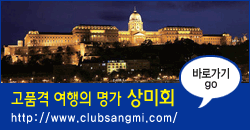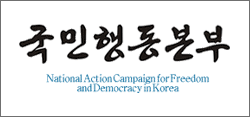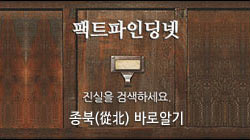by Kim Pyung-woo (Attorney and former head of Korean Bar Association)
The main difference between the impeachment proceeding in Korea and the U.S. is the process of gathering and submitting evidence. The U.S. constitution clearly stipulates how evidence must be gathered and submitted. Three out of the 10 articles in the amendment to the U.S. constitution that have to do with the process of collecting evidence. Any piece of evidence that was not gathered in accordance with such procedures are inadmissible in court. The U.S. principle concerning admissible evidence largely break down into the prohibition of searches without a court warrant, prohibition of enforcing testimony against the will of an individual, prohibition of evidence based in hearsay and the prohibition of interrogation done without the presence of an attorney.
The impeachment of former U.S. president Bill Clinton stemmed from a sex scandal with White House intern Monica Lewinsky. The news media had a field day with that scandal. At that time, almost all American newspapers and programs were inundated with reports about the sex scandal, ranging from all kinds of rumors dating back to Clinton's days as governor of Arkansas. The president's popularity sank, while politicians shunned even having their photos taken with him. Even then vice president Al Gore distanced himself from Clinton.
But the U.S. House of Representatives encountered a problem as they were about to impeach Clinton. There was no piece of evidence that was admissible in court. There were literally mountains of reports and photographs published by the news media over a period of several months. But not a single news report was presented as evidence in the impeachment hearing, since they were not gathered according to proper procedures. Since they are inadmissible in court, such pieces of evidence are considered trash from a legal perspective. If a prosecutor or lawyer presents such evidence in court, he or she would be reprimanded and possibly stripped of their titles. This is because they attempted to sway the opinion of the jury through illegally obtained evidence.
If Lewinsky pressed charges, then her testimony in court could have been considered as admissible evidence. But she did not and there was no admissible evidence. There was an audio recording of Lewinsky confessing to her friend that she had sexual relations with Clinton. But the recording was done by her friend without a proper warrant and was not admissible in court. Submitting the recording would have merely resulted in the friend's arrest. Independent counsel Kenneth Starr tried to interview Clinton, who was not obliged to appear before him. And Clinton had the right to remain silent should he sit face to face with Starr. Repeatedly asking Clinton the same question could have led to Starr being punished for unlawful arrest and enforcing testimony.
During that time, a woman named Paula Jones surfaced on the radar. She claimed to have had sexual contact with Clinton when he was governor of Arkansas. Jones filed charges against Clinton accusing him of sexual harassment and applied to have Lewinsky and Clinton serve as witnesses. Once they take an oath in court, Clinton and Lewinsky would be bound by law to tell the truth. This is the final bastion of morality in the U.S. Lewinsky admitted partially to engaging in sexual conduct with Clinton. And as a lawyer by training, Clinton skillfully denied having a sexual relationship with Lewinsky. Starr managed to obtain testimony given under oath that was admissible as evidence in a court of law. Starr reported that the testimony was evidence of perjury and obstruction of justice. And the House of Representatives ended up charging Clinton. The American principle of admissible evidence applied without exception to the impeachment process.
Let's take a look at the process of gathering and submitting evidence in Korea. The Choi Soon-sil gate triggered the impeachment of President Park Geun-hye. It may not be as sexually-laced as the Lewinsky scandal, but is just as interesting in terms of political intrigue. First, Choi is a longtime confidante of Park and a divorcee. On top of that, Choi has a daughter who had a child out of wedlock. Choi is also the daughter of a man who died 20 years ago and is rumored to have had an unusual relationship with Park. According to claims made by Park's opponents, Choi meddled in state affairs for personal gain and even interfered in the appointment of high-ranking government officials. She is even said to have edited the president's speeches.
The news media has been delivering around-the-clock reporting on the scandal, which naturally shocked and angered the public. It is no surprise to see the public call for the resignation of the president. But the problem rests in the process of gathering evidence. The news media did all of the probing on behalf of investigators. Any investigating conducted by the news media is both illegal and lacks impartiality. Journalists searched homes and offices without court-issued warrants and grabbed evidence and recorded conversations. Comments were edited in order to highlight the shock factor. Questions asked by reporters were transformed into answers, while photographs were choreographed. Choi and others involved in the scandal quickly became enemies of the state. Photos of people who are close to the enemy featured them with angry expressions, while pictures of officials on the other side showed them smiling. The opinions, assumptions and estimates of journalists end up being reported as fact. Information that is disadvantageous to the view of the news reports are either completely ignored or downplayed. Bits of information supporting the claims of Park's opponents multiply, while pieces of evidence are modified and even fabricated.
This is not only apparent in news reports, but opinion pieces published in the dailies, which select only pieces of information that side with their views. The publication or broadcast of opposing views are strictly regulated and edited. In the end, newspaper headlines and breaking news captions end up becoming the conclusion. The news media end up becoming the judge. Should we switch to a system where journalists do the investigating and the producers of broadcast news programs act as judges?
Prosecutors read up on the latest points of investigations conducted by journalists and augment their questions aimed at suspects and witnesses. Why did the news media end up replacing judicial authorities and pass judgment on suspects? The reason is simple. There is no precedent as in the U.S. of allowing only admissible pieces of evidence. The courts are unable to glean through the mountains of trash that are being presented as evidence, even though they were not gathered through the legal process. It is difficult to gather admissible evidence, while anyone can generate trash. So which side will win? In Korea, the side with the most evidence will prevail. Who is going to argue with the side that claims to have more evidence, even though it was not gathered through the proper legal process? If that side loses, it will turn to the news media and make a fuss about how they mountains of evidence they submitted were ignored.
The U.S. places such importance on using only admissible evidence, in order to prevent illicitly-gathered evidence from being used to punish its citizens, sending them to jail, losing their property and even ousting the president. In other words, only admissible evidence is accepted, in order to prevent illicit trials and impeachments from taking place. Our Constitution contains clauses requiring warrants to obtain evidence and prohibiting the use of coercion to obtain testimony. However, our Supreme Court and Constitutional Court has yet to establish a legal precedent forbidding the submission of inadmissible evidence that was not gathered through the proper legal process. The prevailing view is to submit the evidence and hop that the judge will accept it. Most of the judges and prosecutors in our country spend time studying in the U.S. using taxpayers' money. Yet whatever they learn appears to be left behind in the U.S. Once they return to Korea, prosecutors and judges stand firmly opposed to any steps aimed at reforms aiming to weaken the power and authority of judges and prosecutors. They think that their vested rights are a gift from heaven. That mentality is no different among human rights lawyers. They have no interest in taking on cases that have no political implications.
A look at the impeachment bill targeting Park shows 21 pieces of evidence submitted by the National Assembly. They include two written indictments made by prosecutors, two rulings made by the Constitutional Court and Supreme Court, and 15 speeches made by the president and news reports. Written indictments reflect the opinions of an individual no matter who wrote them. Court rulings and speeches can serve as reference, but cannot be considered as evidence. And the 15 newspaper articles cannot be viewed as admissible evidence. I urge the Constitutional Court to return the 15 newspaper articles and warn the National Assembly not to use such items as pieces of evidence. That is the only way we can prevent the news media from behaving like group of posse investigators leading to the demise of our nation. In order to gain the public's confidence in the rulings made by our courts, we need to drive out the trash being presented as evidence and replace them with admissible ones.
Jan. 9, 2017
한국의 탄핵이 미국의 탄핵과 크게 다른 점은 증거의 수집·제출 절차이다. 미국은, 헌법에서 증거의 수집·제출 절차에 대하여 상세히 규정하고 있다. 흔히 미국의 人權선언이라고 하는 수정헌법 10개 조항 중 3개 조항이 전적으로 증거의 수집절차이다. 이 수집절차에 어긋난 증거는 법정에 제출할 수 없다. 미국의 적법증거 원칙은 크게 ▲법관의 영장 없는 압수수색의 금지 ▲의사에 반하는 진술강요 금지 ▲반대신문의 보장이 없는 傳聞(전문)증거(hearsay)의 금지 ▲변호사의 참여 없는 신문금지 등이다.
클린턴 대통령의 탄핵은 르윈스키와의 섹스 스캔들에서 시작되었다. 언론 입장에선 이렇게 재미난 스캔들이 없다. 당시 몇 달 동안 미국의 거의 모든 매스컴이 이 재미난 스캔들로 온통 도배를 했다. 아칸소 주지사 시절의 갖가지 醜聞(추문)부터 시작하여 클린턴 대통령의 온갖 과거사가 다 터져 나왔다. 대통령의 인기는 급락하고, 정치인들은 대통령과 같이 사진찍기조차 피했다. 심지어 엘 고어 부통령까지 클린턴과 거리를 두었다.
그런데, 下院이 막상 클린턴을 탄핵하려고 하니 문제가 생겼다. 적법하게 조사된 증거가 하나도 없는 것이다. 몇 달 동안 언론에 나온 관련 기사와 사진은 산더미였다. 그러나 어느 것도 수사기관이 법원의 영장에 의하여 적법하게 수집한 증거, 즉 헌법상의 적법증거가 아니었다. 이런 증거는 법원에 증거로 제출할 수 없으니까 법적으로는 글자 그대로 쓰레기다. 만일에 이런 쓰레기를 법원에 제출하여 배심원에게 보이거나 읽어주면 그 검사나 변호사는 그대로 징계다. 법조인 자격박탈이다. 왜냐하면 불법한 증거로 배심원을 현혹시켰기 때문이다.
르윈스키가 告訴(고소)를 하면 법정에서의 진술, 즉 적법증거가 나올 텐데 르윈스키가 고소를 안하니 적법증거가 없다. 르윈스키가 친구에게 클린턴과의 성관계를 털어놓은 녹음 테이프가 있기는 있었다. 그러나 이것은 친구가 영장 없이 불법으로 녹음한 것이어서 적법증거에 해당되지 않았다. 제출하면 공연히 그 친구만 처벌된다. 스타(Starr) 특별검사가 클린턴을 만나려고 해도 클린턴이 거부하면 그만이다. 설사 만나도 진술을 거부하겠다고 하면 물을 수도 없다. 같은 질문을 반복하면 불법체포, 진술강요 등으로 처벌될 수 있다.
비슷한 시기 폴 존스라는 여자가 갑자기 나타났다. 그녀는, 클린턴이 과거 아칸소 주지사였던 시절 그와 性접촉을 가진 적이 있다고 폭로했다. 폴 존스는 클린턴을 성희롱 혐의로 고발했다. 이 여성은 르윈스키와 클린턴을 증인으로 신청했다. 일단 증인으로 나가 선서를 하면 거짓말을 할 수 없다. 이것이 미국인의 최후의 양심이다. 르윈스키는 클린턴과의 성적행위를 일부 自認(자인)했다. 클린턴은 변호사답게 르윈스키와의 관계는 성적관계(sexual relationship)가 아니었다고 교묘하게 부인했다. 스타 검사가 적법증거 즉, 본인이 선서하고 진술한 증언을 얻어냈다. 스타 검사는 이 증언이 僞證(위증) 및 사법방해의 증거라고 보고했다. 결국 下院이 클린턴을 상원에 고발하기에 이르렀다. 미국의 적법증거 원칙이 탄핵에도 예외 없이 적용된 것이다.
그러면 한국의 증거수집·제출 절차를 보자. 朴 대통령의 탄핵은 원래 최순실 게이트가 발단이다. 르윈스키 스캔들처럼 로맨틱하지는 않지만 추리·정치 수사극과 유사한 재미가 있다. 우선 최순실이란 여성이 朴 대통령의 절친이고 또 이혼녀다. 거기다 이 이혼녀에게 미혼모인 딸이 있다. 이 이혼녀가 20년 전 죽은 한 남성의 딸인데, 朴 대통령이 이 남성과 특별한 관계였다는 說(설)도 있다. 反박근혜 측 주장에 따르면, 최순실은 이권에도 개입했고 장·차관 인사에도 개입했다고 한다. 대통령 연설문도 고쳤다고 한다.
언론이 두 달 가량 이 件(건)만 가지고 매일, 매시간 보도하니 국민들이 들끓을 수밖에 없다. 下野(하야)다 탄핵이다 말이 나올 만도 하다. 문제는 증거의 수집 절차이다. 수사기관이 아니라 언론이 수사를 했다. 언론의 수사는 불법은 물론이고 공정성도 전혀 없다. 영장도 없이 마구잡이로 집, 사무실 등에 침입한다. 허가도 없이 무조건 압수이다. 불법 녹음은 기본이다. 진술은 흥미위주로 마구 편집된다. 기자의 질문이 답으로 바뀐다. 사진은 하나같이 기획이다. 최순실 측을 敵(적)으로 만든다. 敵과 같은 편은 흉악한 표정으로, 友軍(우군)은 웃는 얼굴이다. 기자의 의견·추측·희망이 사실 기사로 보도된다. 기사 방침에 불리한 사실은 철저히 무시되거나 축소된다. 유리한 사실은 萬이 十萬으로, 百萬으로 늘어난다. 더 나아가 증거물도 위·변조된다.
기사뿐이 아니다. 신문에 싣는 의견, 사설도 철저하게 友軍 것만 골라서 싣는다. 반대 측 주장은 거의 다 배제한다. 기사의 타이틀은 내용과 관련없이 友軍에 유리한 내용으로, 유리한 크기로 나온다. 결국 타이틀이 결론이 된다. 언론이 내리는 판결인 셈이다. 기자가 수사하고, 데스크가 재판한다고 할까?
검찰은 언론이 내려준 수사지침을 숙독하여 부족한 점을 재빨리 보충해 준다. 왜 이렇게 사법기관도 아닌 언론이 수사하고, 재판할까? 이유는 간단하다. 미국처럼, 적법절차를 거친 증거만 적법증거로 인정하는 판례가 없기 때문이다. 적법증거도 아닌 쓰레기 산더미가 모두 증거로 법원에 제출되어도 법원이 이를 걸러내지 않기 때문이다. 적법증거는 만들기 어렵고, 쓰레기는 누구나 쉽게 만든다. 그럼 누가 이기겠나? 한국에서는 당연히 증거 많은 쪽이 이길 것이다. 증거(적법증거가 아닌)가 많다는데 누가 異意(이의)를 제기할 수 있을까? 만일 敗(패)하면 ‘내가 증거가 더 많은데, 신문에도 다 났는데 왜 진 것이냐’고 아우성 칠 것이다.
미국이 적법증거를 헌법의 원칙으로 정한 것은 바로 이런 불법증거로 국민이 처벌되고, 감옥에 가고, 재산을 잃고 심지어 대통령이 탄핵으로 쫓겨나는 불행하고 억울한 일이 없도록 하기 위해서다. 한 마디로 불공정한 재판, 탄핵을 원천적으로 막기 위해서다. 우리나라 헌법에도 미국 헌법과 거의 비슷한 영장제, 강제신문 금지 등의 규정은 있다. 그러나 우리나라 대법원, 헌법재판소는 아직까지 적법하지 않은 증거를 법원에 제출하지 못하게 하는 ‘불법증거 배척’의 판례를 만들지 않고 있다. 막연히 판사가 알아서 안 믿으면 된다는 주의이다. 우리나라 판검사 거의 대부분이 국민 세금으로 미국에 연수를 가서 미국 헌법을 공부했다. 그러나 미국 헌법 공부는 미국에서 끝난다. 한국에 돌아오면 판·검사의 재량을 줄이는 어떤 개혁에도 절대 반대한다. 자신들의 기득권은, 神이 내린 天賦人權(천부인권)인 줄 안다. 소위 인권 변호사, 민주 변호사도 마찬가지다. 정치적 이해관계가 없으면 관심이 없다.
이번 朴 대통령 탄핵소추를 보면, 국회가 탄핵소추장에 붙인 증거자료는 모두 21개이다. 검사의 공소장 2개, 헌법재판소 및 대법원 판결문 2개, 朴 대통령 시정연설과 담화문, 그리고 신문기사 15개이다. 공소장은 누가 썼든 쓴 사람 개인의 의견이지 증거가 아니다. 판결, 담화문, 연설문도 일반적으로는 참고자료이지 증거는 아니다. 신문기사 15개는 절대로 법원에 제출 되어서는 안 되는 쓰레기라고 할 수 있다. 이번에 憲裁에서 신문기사 15개는 국회에 돌려주고 다시는 증거로 제출하지 말라고 주의를 주기 바란다. 이 나라에서 언론이 수사하고 재판하는 망국적인 惡習(악습)을 뿌리 뽑으려면 그 길뿐이다. 국민이 법원의 판결을 신뢰하게 하려면 적법증거가 아닌 쓰레기를 법정에서 모두 쓸어내야 한다.












 Kim Pyung-woo
Kim Pyung-woo








 트위터
트위터 페이스북
페이스북 네이버
네이버




























